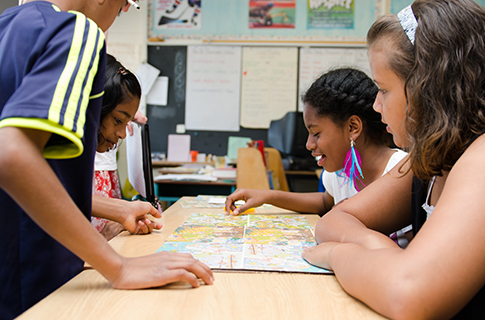Type and Purpose of Learning
In this lesson, students play with words to create original sentences. The activity requires the children to listen, ask questions and use their creativity to suggest answers. Importantly, students have a chance to work through their feelings and figure out how to respond to different situations, building on each other’s ideas in an active and social classroom.





